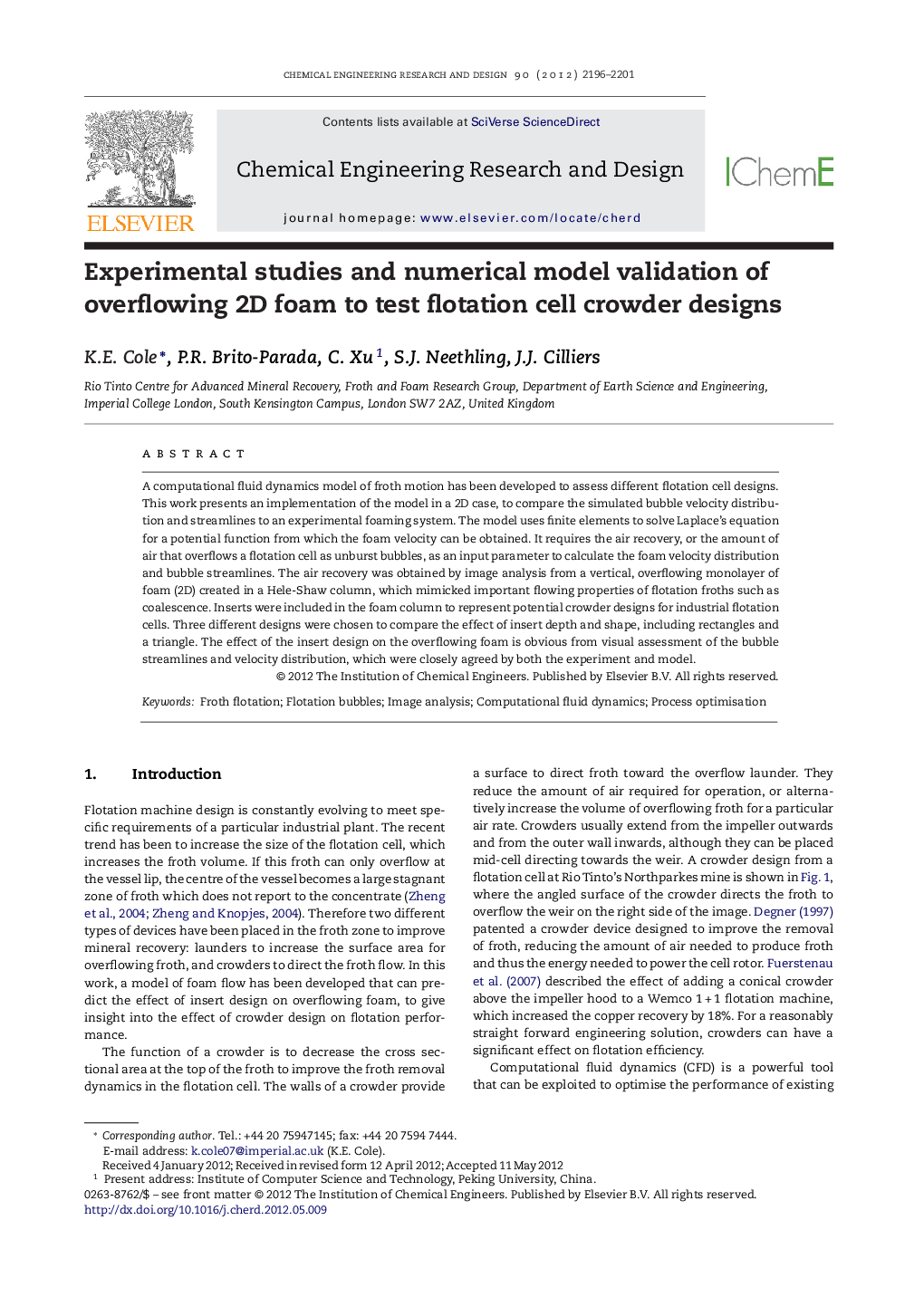| Article ID | Journal | Published Year | Pages | File Type |
|---|---|---|---|---|
| 620737 | Chemical Engineering Research and Design | 2012 | 6 Pages |
A computational fluid dynamics model of froth motion has been developed to assess different flotation cell designs. This work presents an implementation of the model in a 2D case, to compare the simulated bubble velocity distribution and streamlines to an experimental foaming system. The model uses finite elements to solve Laplace's equation for a potential function from which the foam velocity can be obtained. It requires the air recovery, or the amount of air that overflows a flotation cell as unburst bubbles, as an input parameter to calculate the foam velocity distribution and bubble streamlines. The air recovery was obtained by image analysis from a vertical, overflowing monolayer of foam (2D) created in a Hele-Shaw column, which mimicked important flowing properties of flotation froths such as coalescence. Inserts were included in the foam column to represent potential crowder designs for industrial flotation cells. Three different designs were chosen to compare the effect of insert depth and shape, including rectangles and a triangle. The effect of the insert design on the overflowing foam is obvious from visual assessment of the bubble streamlines and velocity distribution, which were closely agreed by both the experiment and model.
Graphical abstractExperiment and simulation of the effect of crowder design on bubble velocity in a model froth flotation system. Figure optionsDownload full-size imageDownload high-quality image (308 K)Download as PowerPoint slideHighlights► A 2D overflowing foam column was used to validate a froth motion model. ► Different inserts were used to assess crowder designs on industrial flotation cells. ► Image analysis measurements agreed with the model predictions of bubble velocity.
